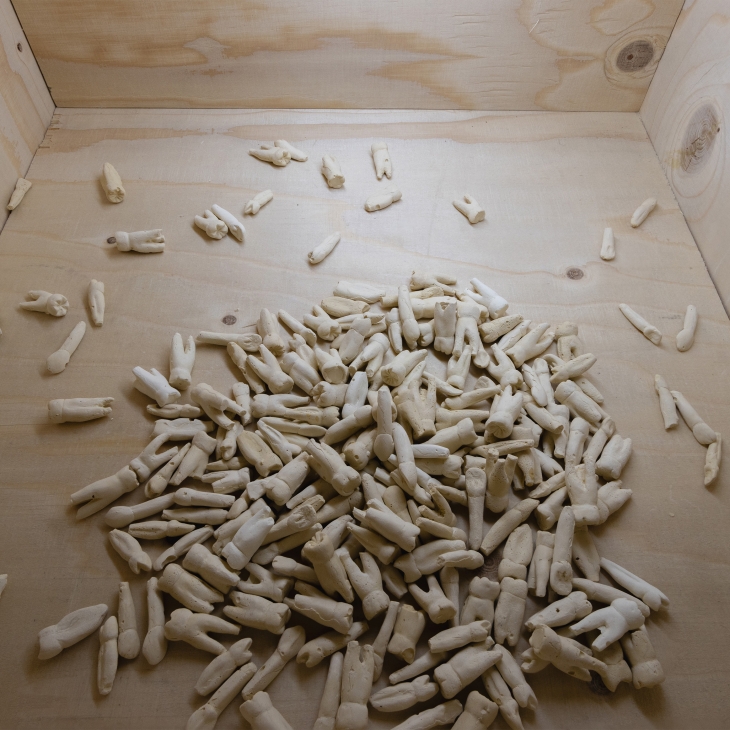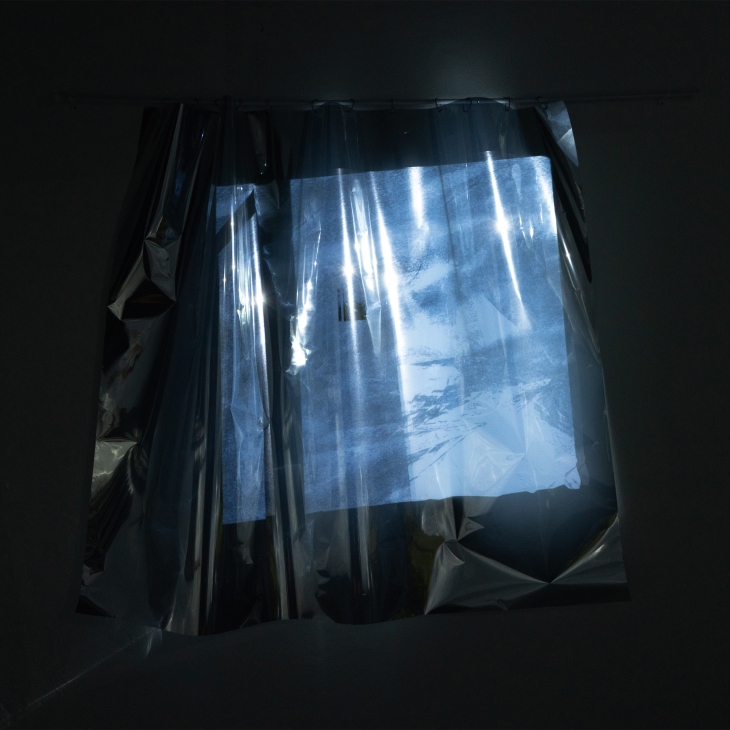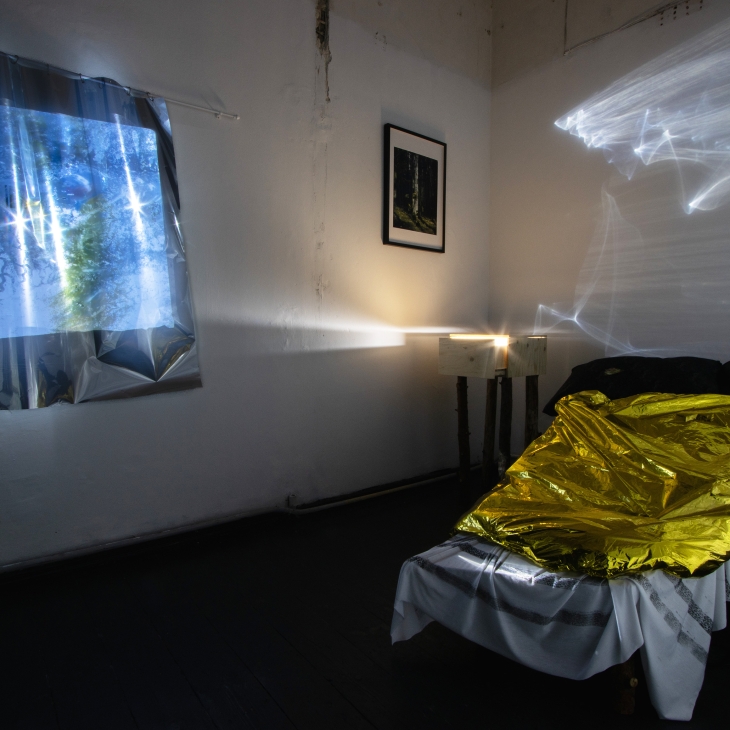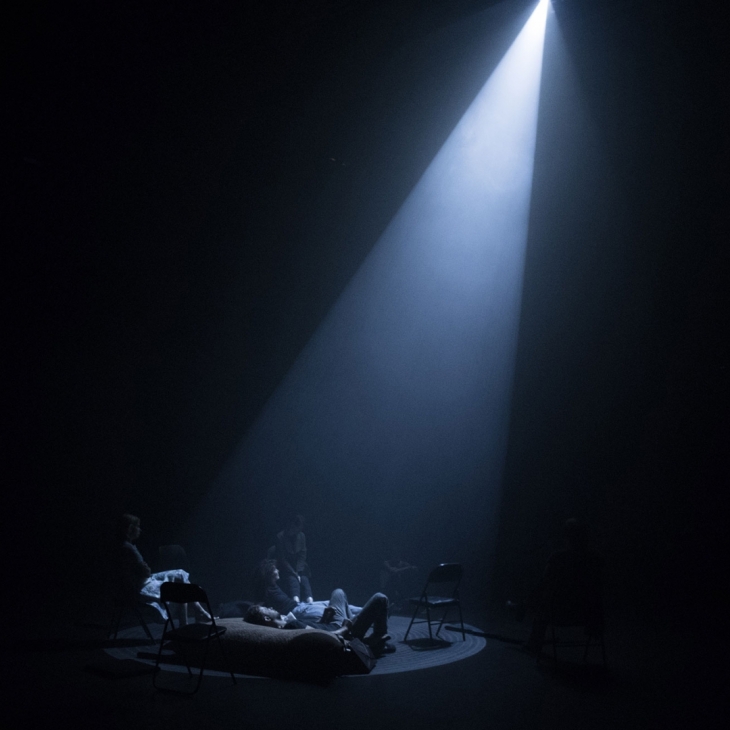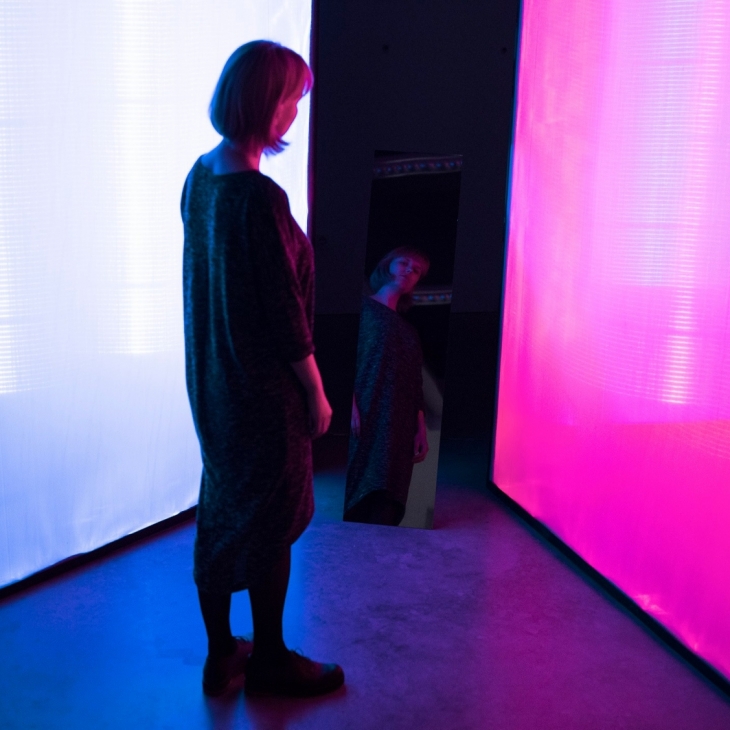Angro Animi, 2024
Mirror film, rescue foil, pine plywood, pine trunk, pine needles, fabric, acrylic paint, gypsum, photographs, audio 5’’, video projection 5’’.
The artwork “Angor Animi” sprouts its roots in the author’s migraine experiences. To understand this complex affliction and find the proper artistic characters and materials, the author delved deep into the neurophysiological, psychological and ecological research of migraines, focusing mainly on migraine descriptions by british neurologist Oliver Sacks and many case studies done by different medical institutions. The author also used self-study, as a filter for all the data, mainly relying on his migraine diary. Concluding his research, the author collected the necessary data, which he could visualise and use as the foundation of his artwork – photophobia, phonophobia, visual and sensory disturbances, speech impairment, scintillating scotoma, childhood trauma linked to specific locations and the now abandoned childhood home, pine tree pollen allergy, tooth itching/pain, self-isolation and self-reflection. The artwork itself must be viewed from multiple angles, to see the full picture and gain the full understanding of the complex situation. The audio-visual projection leads the viewer to multiple photographs, depicting the sensory fragmentation and scattered pain, which leads the viewer further to the elements of a bedroom – a skewed bed and nightstand, which hide elements of pine trees, medical supplies, 216 tooth sculptures and light reflections. The audio soundscape is a clear metaphor to the linear experience of a migraine, with many layers, swings and levels, which go from peaceful arrangements to uneasy and borderline disturbing noises. The artwork aims to give any viewer an insight into the author’s personal migraine experience, in which the migraine is no longer a diagnosis that is only linked to the author of the work, but becomes something that can be understood and partially experienced by any viewer. Angor Animi is a medical latin phrase, describing a patient’s belief of dying or imminent dread.


